5 dining spots to check out at Ubud
From farm to table concepts, to modern European cuisine restaurants
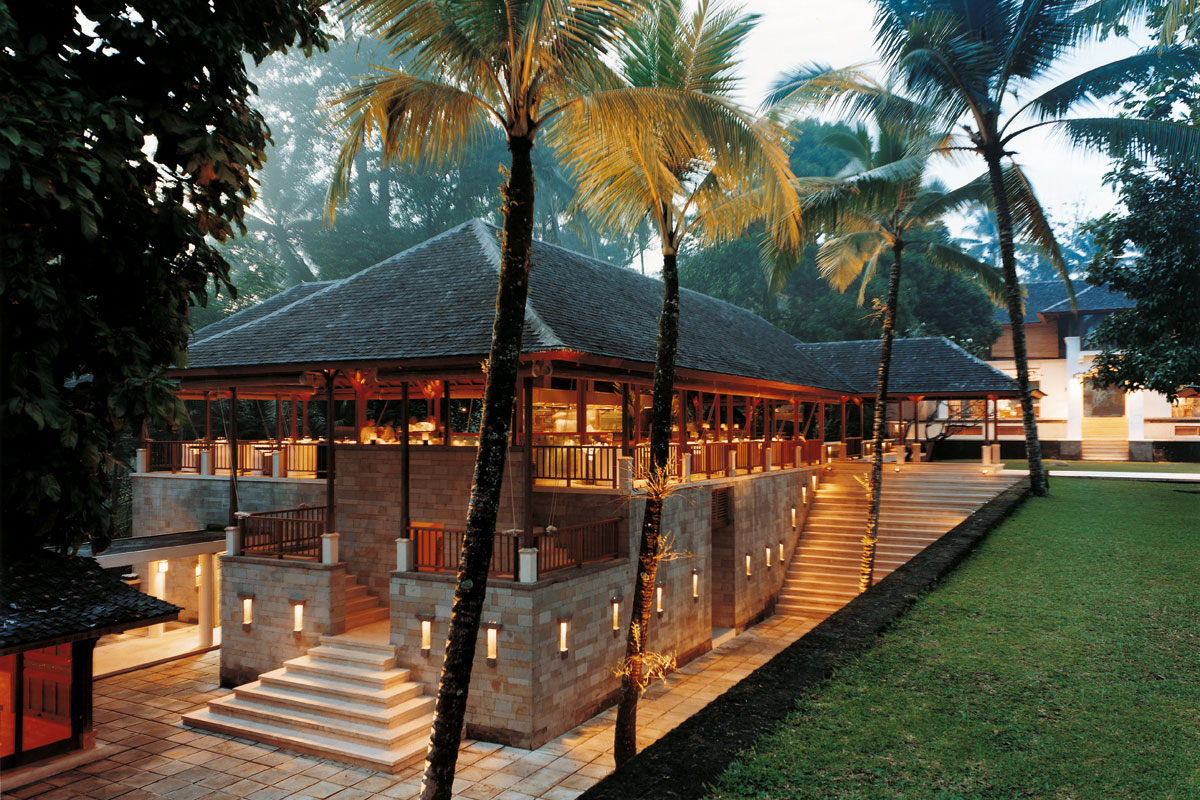
The highland town of Ubud is the hotspot of Bali’s growing farm-to-fork devotees; one of its oldest champions is COMO Shambhala Estate (CSE) an upscale residential ‘retreat for change’ for 360° holistic wellness, located in a private estate high on a river gorge. Their integrated wellness programmes place core emphasis on super healthy cuisine, with a resident nutritionist, bespoke eating regimes and recipes depicting specific nutritional benefits all presented at their Ikebuchi-designed, restaurant, Glow (which is open to non-retreat guests). Glow derives its organic and chemical-free produce from the Estates’ organic gardens, Ubud farms, or like so many others in Bali, from Bedugul’s northern highland farms – the island’s main source of organic produce – and where CSE acquire much of their vegetables, fruits, herbs and spices. Its menus cover a well-balanced mix of raw living and vegan foods and lightly-cooked quality meat, fish and vegetables, from indigenous to Indian, plus cold-pressed juices and vegetable extracts. Ingredients making repeated appearances in wildly flavoursome dishes include spinach, lemongrass, young coconut, flaxseed and raw honey, from Java and Sumbawa.
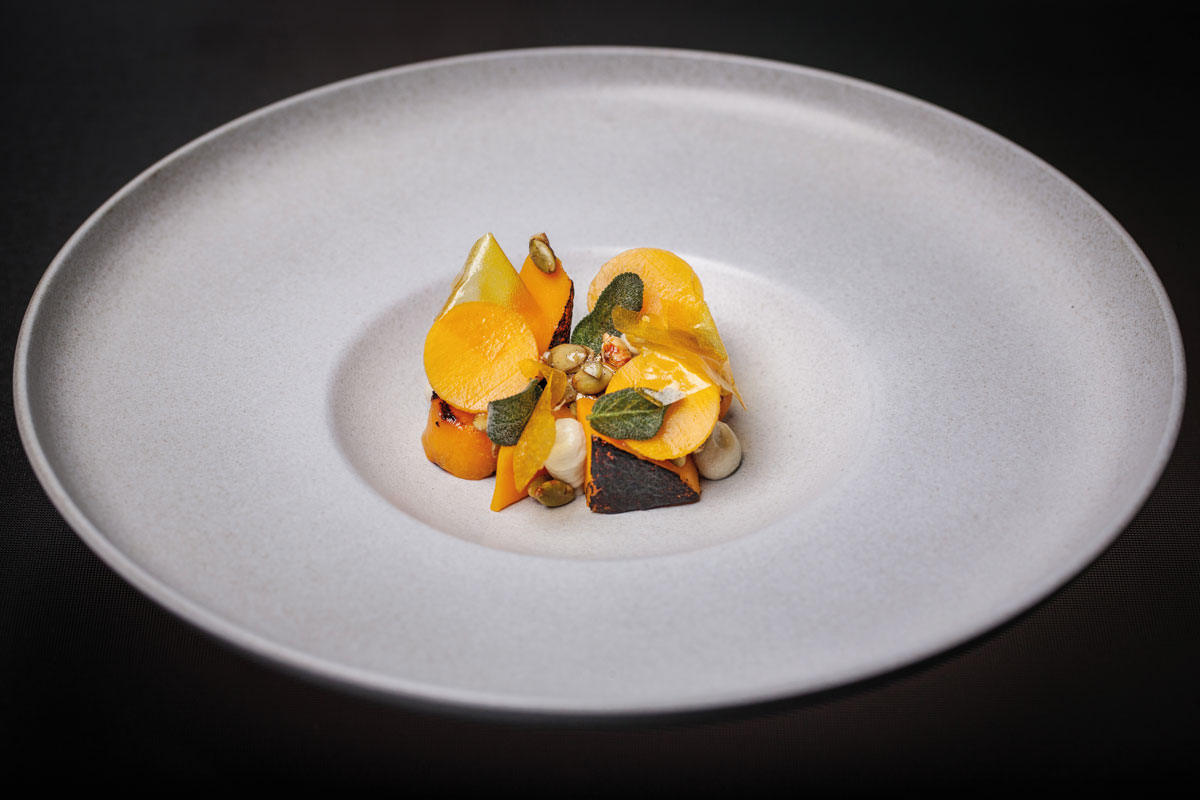
Former five-star hotel chefs, Eelke Plasmeijer and Ray Adriansyah, were so inspired by the global locavore movement (another farm-to-fork offshoot, but with more emphasis on restaurant cuisine) that they named their Ubud restaurant after it, living and breathing this ‘modern cuisine, local produce’ philosophy. A runaway success since 2013, Locavore’s contemporary European cuisine utilises around 95 per cent of locally-sourced ingredients. “It didn’t make sense to rely on expensive imported ingredients, when we’re surrounded by Indonesia’s bounty,” declares Dutchman Eelke. “Nothing beats produce that’s still in the soil the same day you cook it. We’re the catalysts between local producers and discriminating diners!” Locavore’s almost daily changing tasting menus (with options of five or seven dishes) showcase meats from two small organic farms outside Ubud, while chemical-free produce hail from sustainable farmers, fishermen and artisans across Bali, or further afield, including Lombok seaweed and Javanese free-range lamb. Dishes, meticulously assembled in the open kitchen, present mind-blowing ingredient use, like beetroot ice-cream, or signature dish of two dozen leaf varieties – pickled, cooked in whey, raw, etc – eaten with a wooden pincet. With limited kitchen space in their Scandinavian-style restaurant, fresh produce is delivered twice daily, but as Eelke reflects, “Vegetables, fruits and herbs taste so much better when not chilled.”
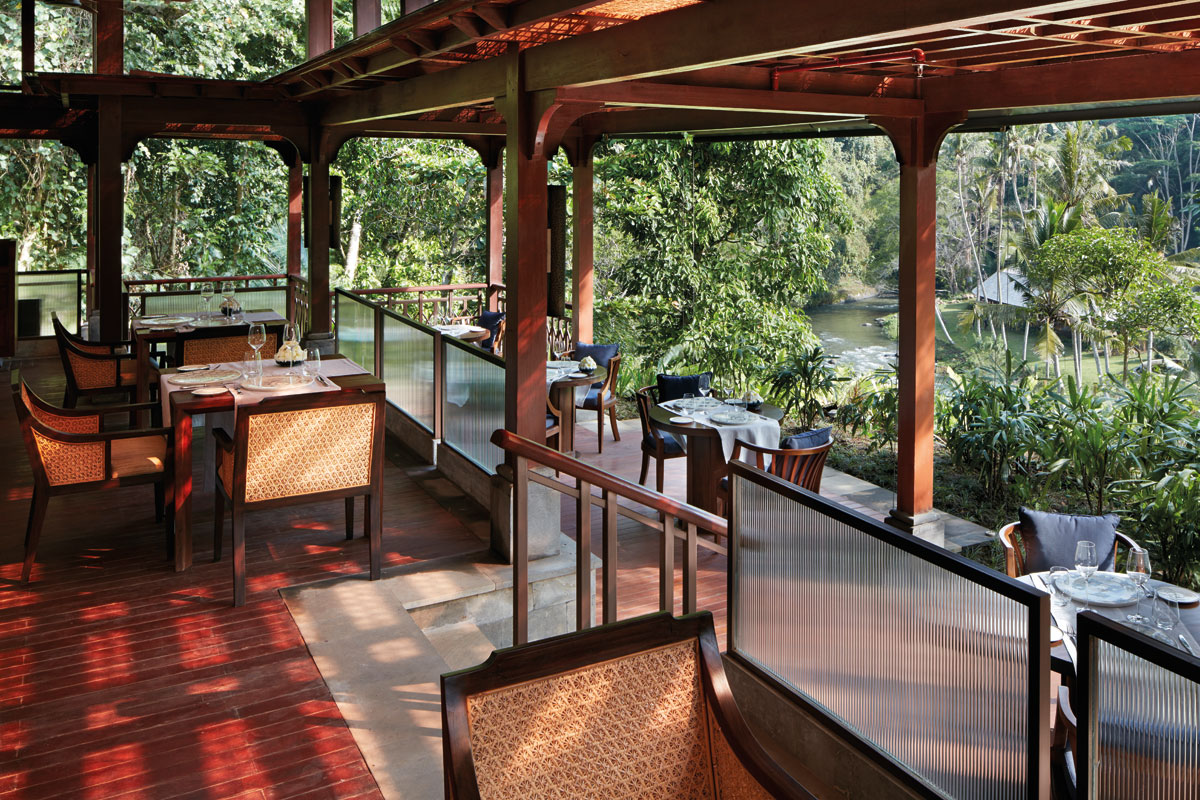
Even luxe brand, Mandapa, a Ritz-Carlton Reserve, has gone local. Health-conscious cuisine is offered at their F&B venues and especially Sawah Terrace, an all-day dining restaurant which boasts elevated river vistas. Executive chef Maurizio Bombini and his kitchen team work with around 90 percent of their produce sourced from two on-site organic gardens or suppliers and farms around Ubud – there are even working rice paddies in the middle the Reserve. “It’s every chef’s dream to have their own vegetable garden and part of Mandapa’s concept to grow our own produce for instant, accessible freshness,” declares this Italian chef. “Currently, we grow lemongrass, mint varieties, Italian basil, pumpkin, zucchini, and more, while our fruit trees include papaya. I love using ginger, lemongrass, kaffir lime and other key ingredients in our menus, which include ‘Indonesia Flavours’ – Western techniques, local ingredients and traditional Indonesia cuisine.” Like many dishes, signature, Sawah Rujak Udang, with grilled tiger prawns, green mango, young papaya and tamarind dressing, showcases just-plucked garden ingredients.
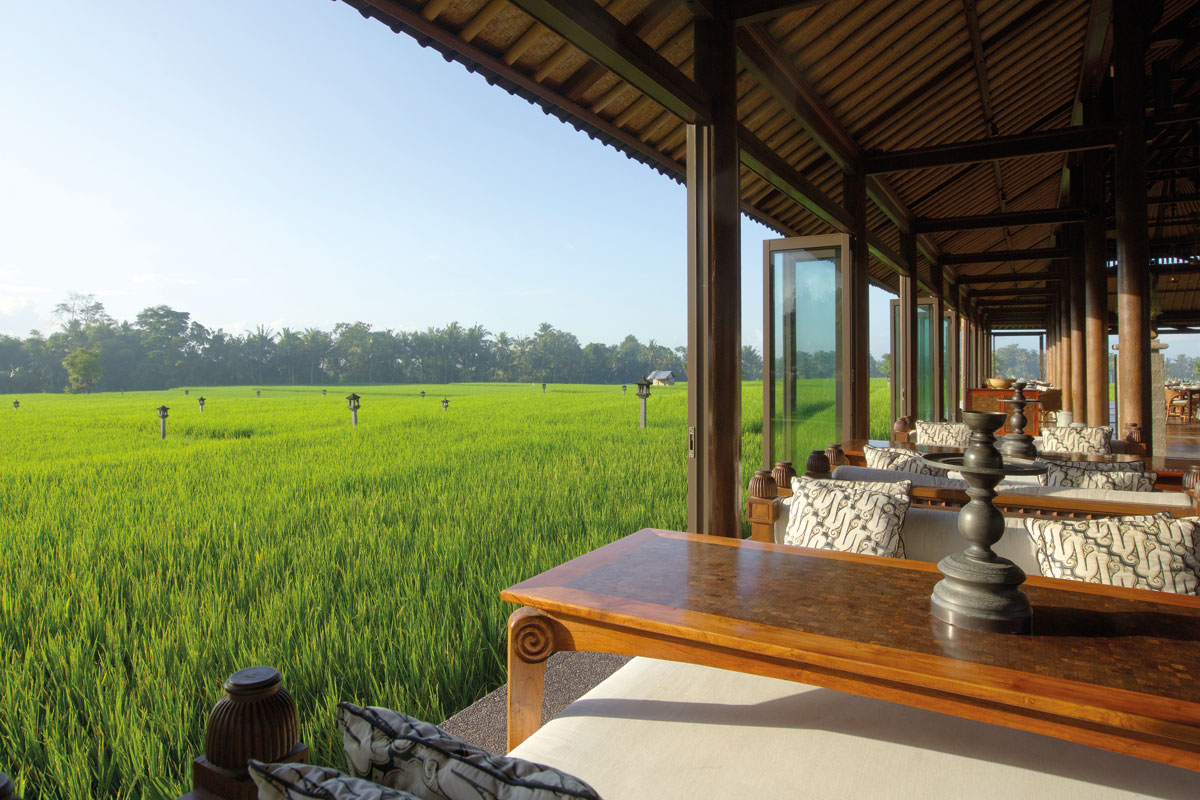
The Chedi Club Tanah Gajah boasts stunning estate grounds that encompass rice fields that supply the kitchen’s organic rice,. Executive chef Khairudin Md Nor (aka Dean) has lovingly established extensive organic gardens, filled with edible flowers, countless herbs, spices and vegetables – from lemon balm and wild rocket to tomatoes and sunflowers – and fruits, like purple passion fruit. All take starring roles in The Restaurant, a semi-open pavilion nuzzling the rice fields, with menus of Indonesian and Balinese dishes and Western classics with modern twists. “Having instant access to these ingredients gives us real freedom with our menus,” says Dean Chef Dean also sources produce from Bedugul and the archipelago, finding gems like Javanese ducks and Sumbawan barramundi; he also makes his own truffle sauce, sunflower-seed bread and rosella salt granules. Just a few necessary proteins are imported. Gastronomic yet simple creations, such as House-smoked Salmon with fennel, tangerines and Balinese saffron, are exquisitely presented. “In Bali, there’s many fine ingredients, but I’m most inspired by basil and cultivate lemon, sweet, cinnamon and purple types;” which, along with other herbs, transforms salads (like yummy Red Quinoa), and garden-inspired beverages – don’t miss the vodka-based, purple basil cocktail. This Singapore native extends his evident passion for his gardens to even residing among his beloved produce.
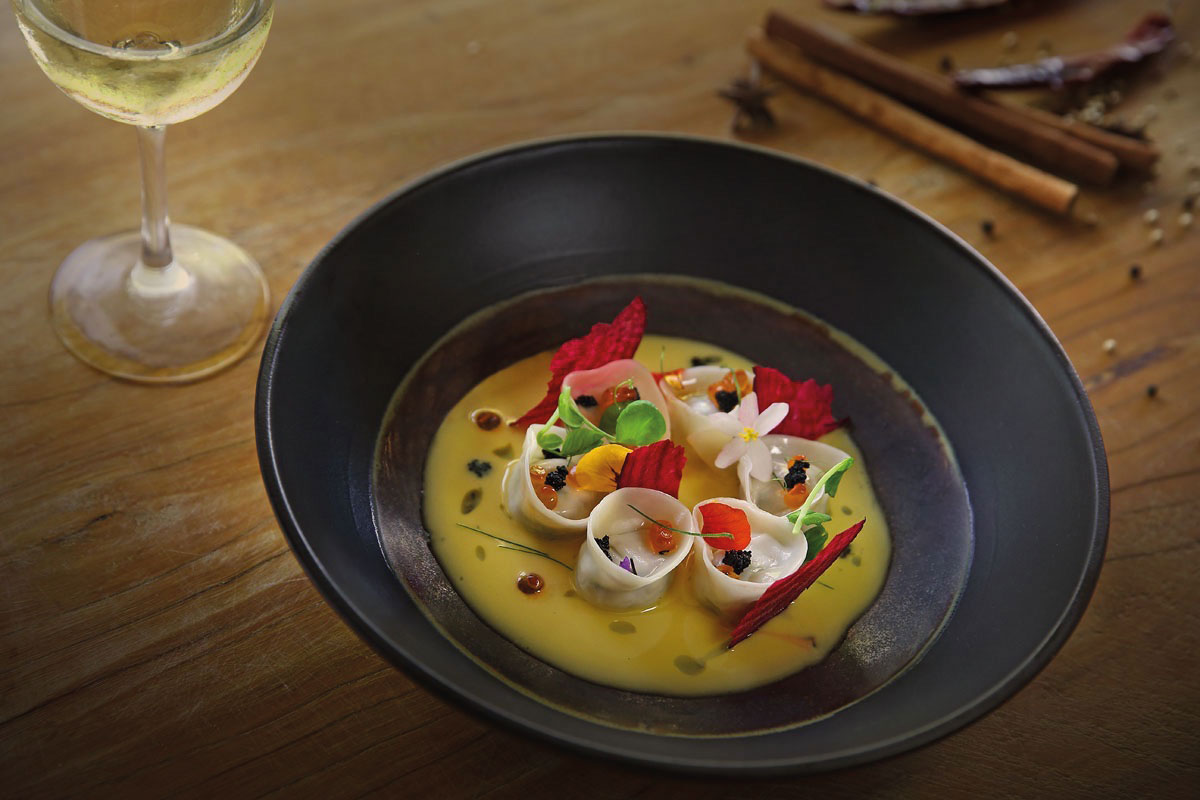
Elsewhere in Bali, newcomer AZUL Beach Club not only stands out in Legian for its three-level, bamboo restaurant- bar structure beside the beach, but also for its sophisticated global comfort, coastal cuisine menus, created for sharing and casual dining. Masterminded by Javanese executive chef, Arief Wicaksono, his creations are replete with Middle-Eastern, Thai, Japanese and Mediterranean influences, inspired by his travels and culinary stints, yet incorporate around 80 per cent of local fresh produce. AZUL’s farm to fork commitment extends to sourcing Indonesia’s finest produce: far-flung finds cover Lombok clams, Papuan vanilla bean pods (for divine ice-cream), West Java’s hand-picked berries and Wagyu beef, from Sumatran-reared Australian cows. Wicaksono also grows leafy greens in kitchen gardens; his favourite ingredient is the “fantastic and fresh” coriander, showcased in White Snapper Ceviche as a flavour-packed, dehydrated component. Homogenised natural extracts from spices, fruits and flowers are transformed into flavour-packed beverages.
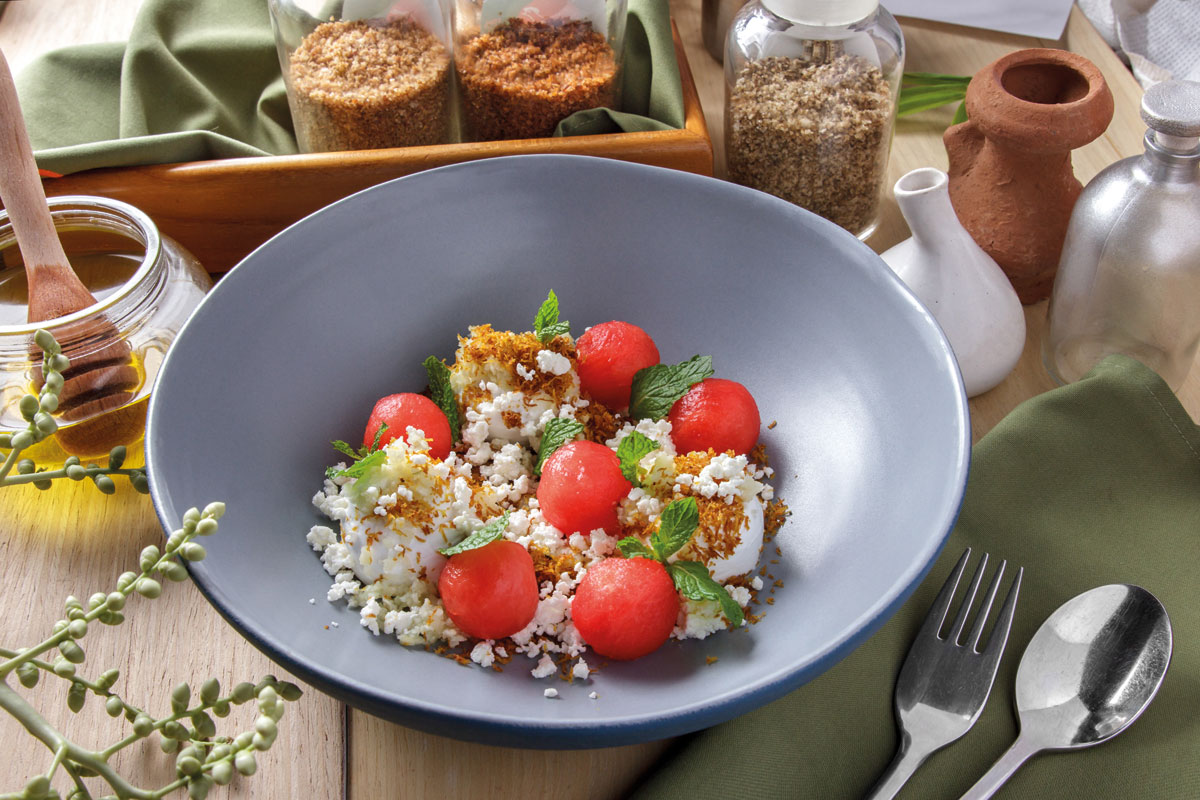
Over at Jimbaran Bay, Cuca’s offering of tapas, cocktails and desserts are made using 100 per cent premium natural produce, personally sourced across Indonesia. Only the wines are imported and everything is made in-house from scratch. Cuca’s co-creator and chef, Canadian Kevin Cherkas is a passionate supporter of archipelago farmers and says the abundance of home-grown produce inspires him to come up with delicious new recipes. Dishes burst forth with tropical flavours and freshness, such as Honey-baked Pumpkin Salad, with granola, creamy green beans and tarragon. “Indonesia offers so many underrated ingredients like cashews, papayas, wild-line caught fish and ginger blossom, which all work amazingly well in our dishes,” says Cherkas who also swears by unusual finds, like lontar tree vinegar from North Bali, a fantastic natural citrus substitute.
SHARE







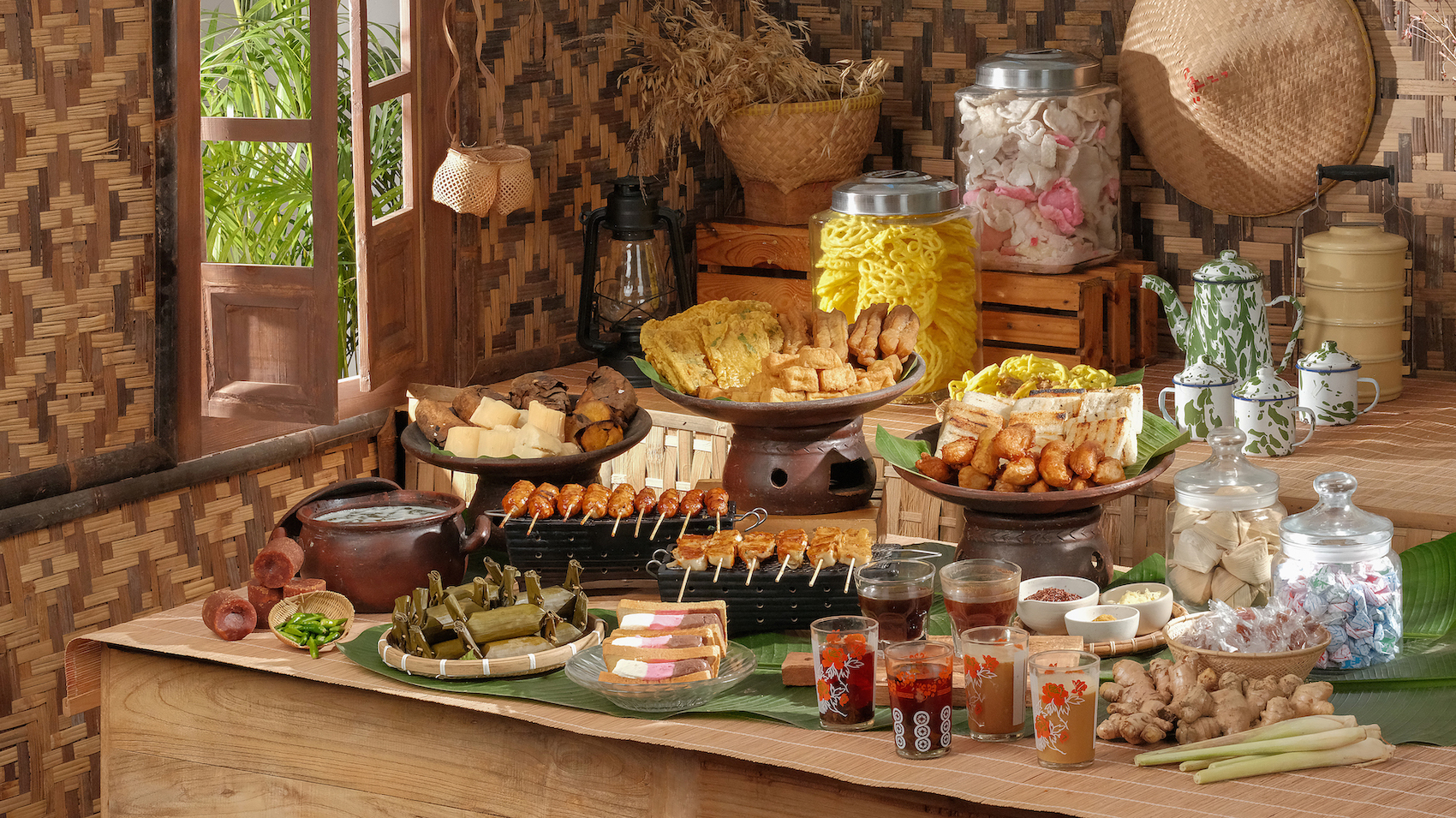
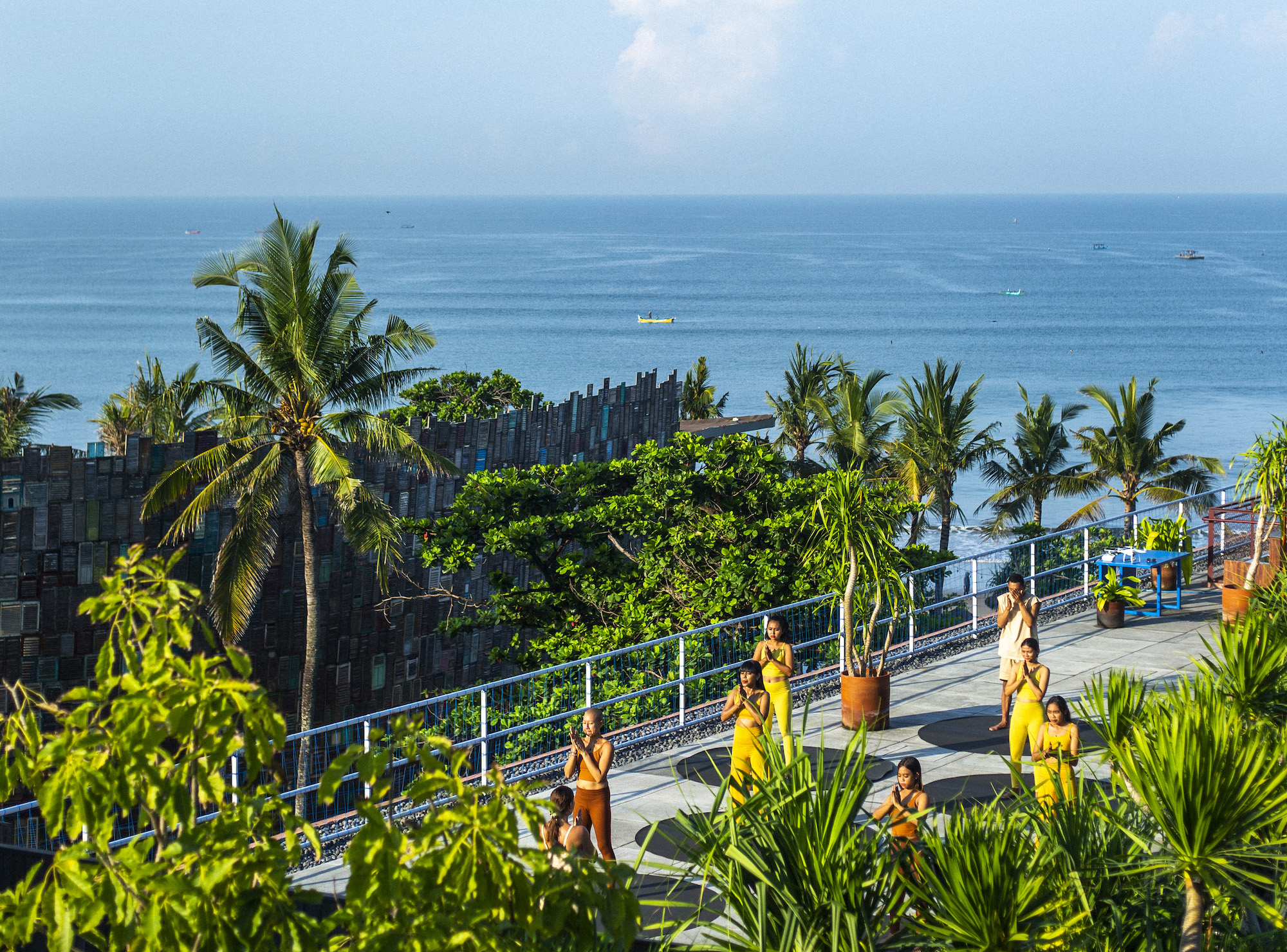
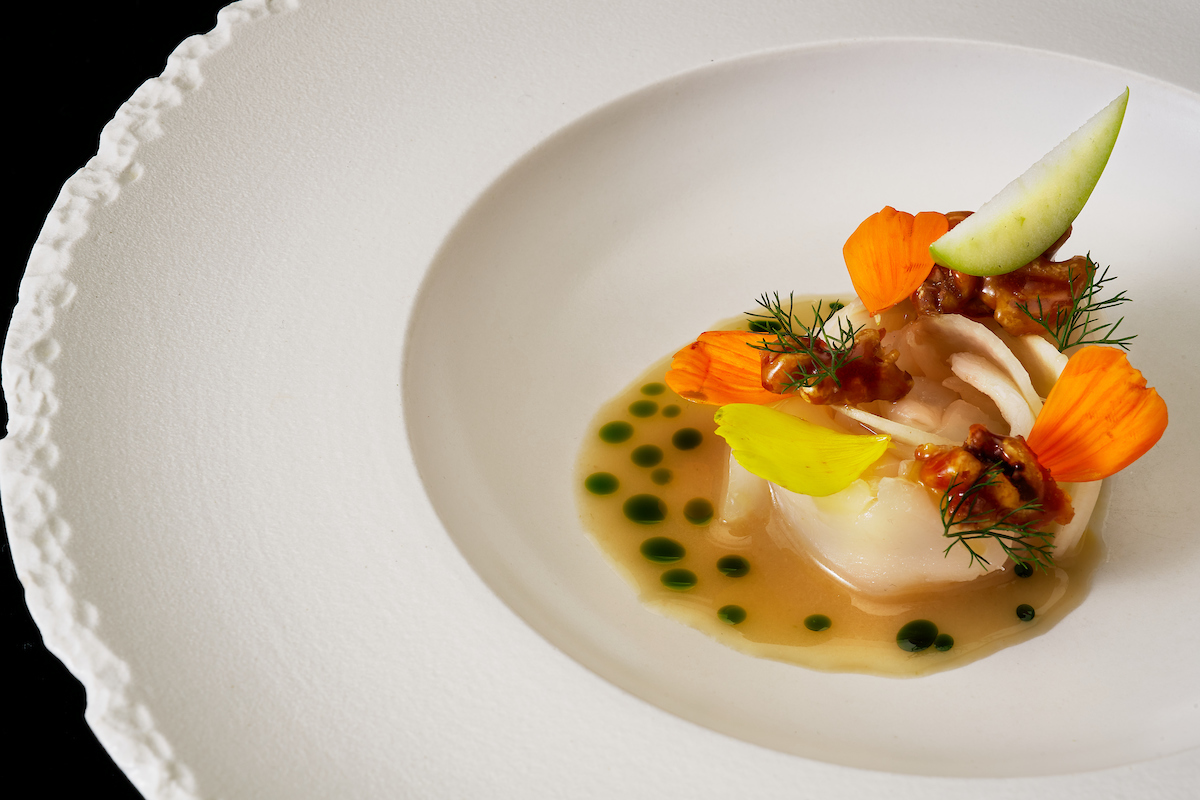







 SUBSCRIBE
SUBSCRIBE